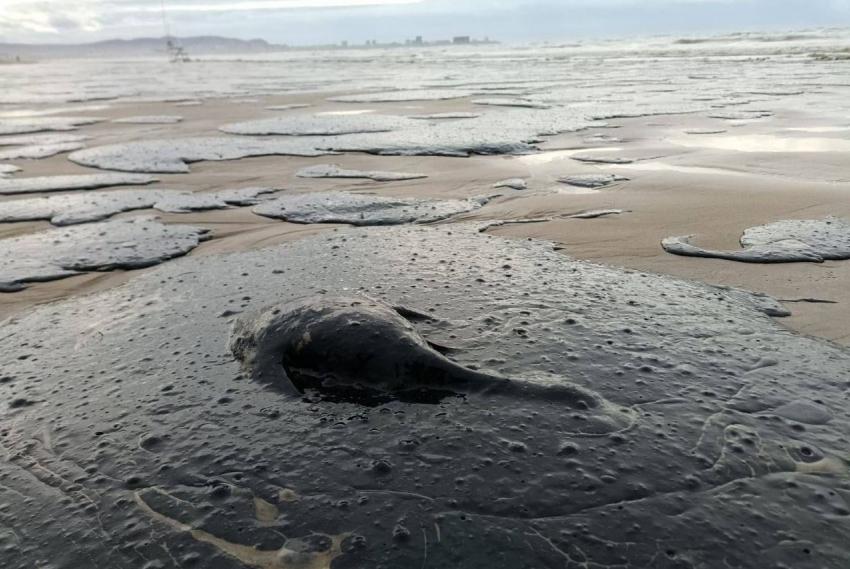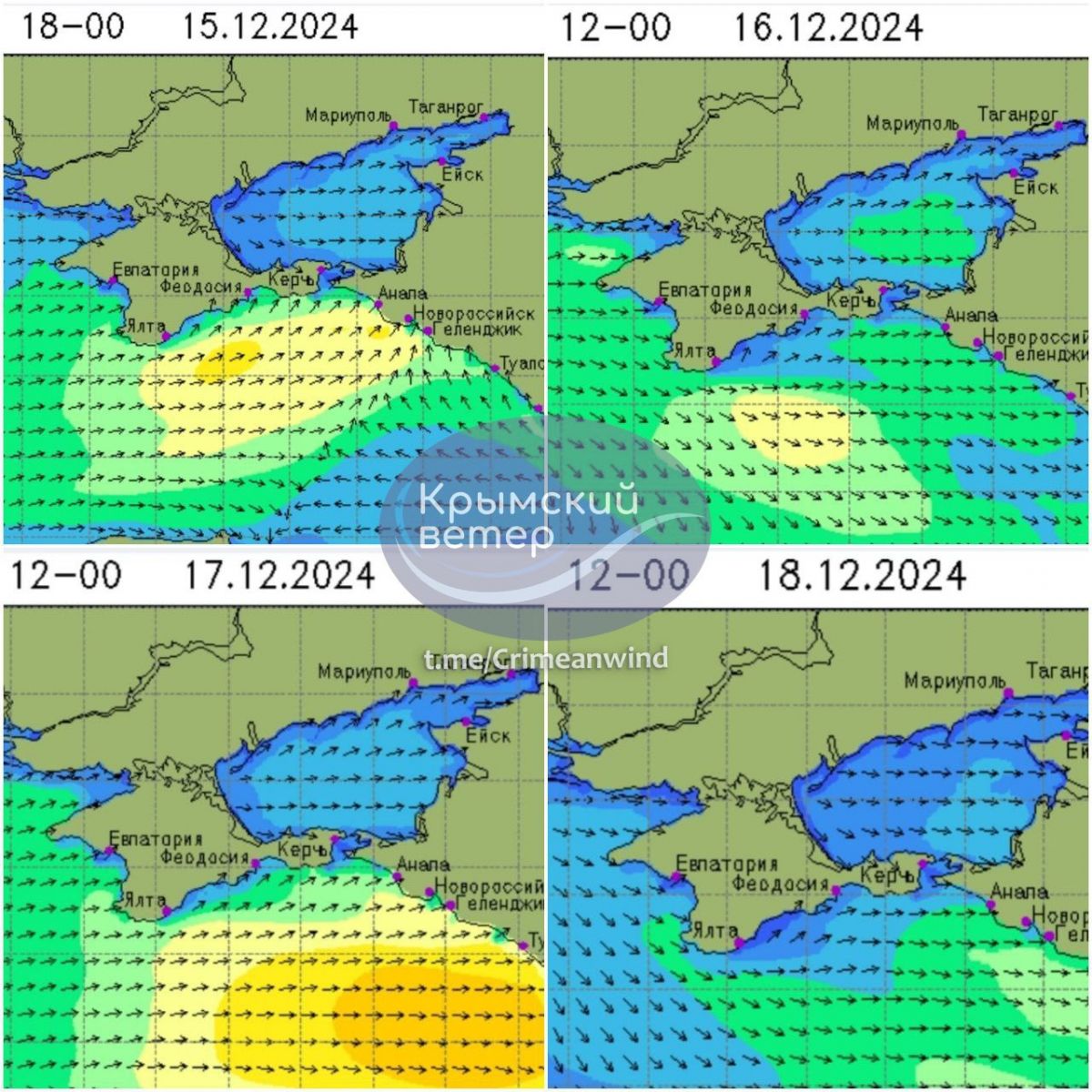'Black tide': What happened with Russian tankers near Crimea and possible threat to Ukraine
 Photo: collection of oil-contaminated sand in Russian Anapa (t.me/anapaofficial)
Photo: collection of oil-contaminated sand in Russian Anapa (t.me/anapaofficial)
Last week, two Russian tankers suffered a disaster in the Kerch Strait. As of today, it is known that at least 3,000 tons of fuel oil have leaked, and oil stains have reached the beaches of Krasnodar Krai (Russia). Environmentalists do not rule out the threat to the waters and coastline of Ukraine.
What is known about the accident and the potential consequences of the environmental disaster is covered in the RBC-Ukraine material.
Contents
- Accident and oil spill: What happened in the Black Sea
- What Ukraine says about the causes and damages
- Largest environmental disaster in the Black Sea?
- Are there threats to Ukraine's waters and coastline?
Accident and oil spill: What happened in the Black Sea
On the morning of December 15, near Cape Takil in the southern part of the Kerch Strait, two Russian oil tankers, Volgoneft-212 and Volgoneft-239, suffered disasters with an interval of about an hour and a half. Both vessels, carrying more than 9,000 tons of fuel oil, sustained severe damage due to a storm, with wave heights reaching 2 meters and wind speeds of 24 m/s.
After the accident, the tankers ran aground near the Taman area. In one of the videos published on social media, one of the tankers is seen literally breaking in half.
As a result of the accident, one sailor died, and 26 others were rescued. The official version states that the accident occurred due to crew errors and excessive stress on the hulls. The accident led to the spill of petroleum products in the waters of the Kerch Strait and, likely, to the largest environmental disaster in the Black Sea.
The exact amount of fuel oil that ended up in the water is unknown. The Russian government claims it was a partial spill. The Marine Hydrophysical Institute of the Russian Academy of Sciences estimates the spill at 3,000 tons.
It seems that the storm pushed oil stains from the occupied Crimea towards the Russian shores. On the morning of December 17, they reached the coast of Krasnodar Krai, and photos and videos of oil stains on the beaches of Anapa appeared online. The city authorities declared a state of emergency, and similar measures were implemented in the settlement of Blagoveshchenskaya and several communities in the neighboring Temryuk district.

Photo: oil stains on one of the beaches in Krasnodar Krai (t.me/crimeanwind)
Today, public pages are reporting about the "black, black tide" in the Black Sea. Throughout the night, the oil stains continued to wash up on the shores of Kuban, and according to eyewitnesses, on some beaches, the fuel oil is not in patches, but in a continuous layer 30 cm thick. Birds covered in oil have also been found along the coastline, unable to fly.
It should be noted that yesterday morning, in the area of the Kavkaz port, another tanker, Volgoneft-109, signaled distress due to a crack in the hull. The vessel was carrying 4,000 tons of fuel oil, and due to the accident, the integrity of the tanks was compromised. However, according to Russian media, no new spill occurred.
What Ukraine says about the causes and damages
Russian tankers suffered an accident because they violated navigation rules and went to sea despite a strong storm, said a spokesperson for the Ukrainian Navy, Dmytro Pletenchuk.
"The weather conditions at that time were not ones under which they could be in open sea... As usual, the Russians violated everything they could violate," he emphasized.
According to him, the storm season is currently ongoing in the Black and Azov Seas and will end by mid-spring. It will be difficult to clarify all the circumstances of the incident before then. Moreover, these are old tankers, over 50 years old, which further confirms that the transportation of oil products is more important to Moscow than ensuring safety standards, Pletenchuk added.

Photo: one of the tankers before the accident, the Volgoneft-212 vessel is over 50 years old (vesselfinder.com)
Although the Volgoneft series tankers are classified as river-sea vessels, they are primarily used for river navigation. At most, they are suitable for entering a marine bay, but they are certainly not intended for full-scale cargo transport by sea. Moreover, they are not capable of withstanding high waves.
The accident due to violations of technical requirements is also mentioned in the official statement of the Ministry of Environmental Protection and Natural Resources of Ukraine. "This is a result of Russia's disregard for international safety standards, which is typical of an aggressor," the ministry stated.
And this is not an isolated case. To date, the Ukrainian side has recorded nearly 7,000 environmental crimes with damages amounting to 3.1 trillion UAH. Specialists are collecting data and working on modeling the consequences of the large-scale oil spill to assess the new damages.
"According to preliminary estimates, the fuel oil spill has caused approximately $14 billion in damage to the Black Sea ecosystem. This figure will certainly change after data is refined," said Minister Svitlana Hrynchuk.
She also mentioned that the information will be updated, including based on high-quality satellite data, which will arrive after weather conditions improve. Additionally, a request is being prepared to the International Commission for the Protection of the Black Sea Against Pollution to propose conducting an independent expert assessment of the water, bottom sediments, and marine ecosystem.
Largest environmental disaster in the Black Sea?
Both tankers were transporting fuel for the Russian fleet, and the vessel tracking system was turned off for 12 days at the time of the accident. Tracking data shows that the delivery route began in Volgograd and ended in the Kerch Strait. Currently, the extent of the pollution spans at least 60 km from the Crimean Bridge to Anapa.
"Accidents involving two old tankers in the Kerch Strait, each over 50 years old, are a serious environmental problem. The leaking fuel oil threatens the local ecosystem," said Natalia Hozak, director of Greenpeace Ukraine.

Photo: the storm drove oil stains to the Russian coastline (t.me/crimeanwind)
There are grounds to say that this is the largest man-made disaster in the Black Sea. The region has already suffered from a similar spill. In November 2007, another Volgoneft class tanker was involved in an accident during a storm. According to official data, between 1,200 and 1,600 tons of fuel oil were spilled into the sea. Now, the amount is at least 3,000 tons, with a possibility that the Russian side is concealing the true scale of the disaster.
The 2007 accident led to the pollution of 10 km of the coastline on both sides of the Kerch Strait. Thousands of tons of contaminated seaweed and sand were collected. Due to the lack of facilities for processing such waste collected on the Russian side, it was buried near the shore, leading to further contamination of the water and soil.
The flora and fauna suffered significant damage. The heavy fractions of the oil products settled on the seabed, destroying bottom-dwelling organisms that serve as food for many fish species, such as gobies and mullets. The lighter fractions formed a film on the surface of the sea, leading to the death of about 12,000 birds. Significant damage was still observed a year after the accident.
Are there threats to Ukraine's waters and coastline?
According to the Ukrainian Scientific Center for the Ecology of the Sea, the current fuel oil spill will have catastrophic consequences for the Black Sea ecosystem. It will lead to the death of plankton, the poisoning of fish, seabirds, and other organisms due to the toxic effects of petroleum products. Contamination of the seabed and coastal areas will disrupt food chains and cause long-term changes in the region's biodiversity. Recovery may take decades.
In an interview with Ukrainske Radio, acting director of the Center Viktor Komorin explained that, under current conditions, the fuel oil will settle on the seabed, but some of it in the form of an emulsion and film will be carried over long distances.
"And most likely, the southern part of the Kerch Strait is contaminated with petroleum products. Why most likely? Unfortunately, as of today, there is still no satellite data on this issue because the region is heavily clouded," he said.
He added that the sea has no borders, so the consequences could affect not only Russian but also Ukrainian territories. "There is still a threat that some petroleum products have reached the coast of Crimea. We still don't know this for sure," Komorin noted.
There are already reports on social media of potential contamination in Ukraine's waters. The RIA-Melitopol news agency shared a video filmed by a fisherman in the occupied village of Kyrylivka. It shows hardened black pieces washed up on the shores of the Azov Sea, which began to melt when heated with a blowtorch. This suggests an oil-based substance.
This discovery has become one of the visible signs of the impending environmental catastrophe, which is being completely ignored by the occupying authorities. At least, none of the Russian media have mentioned what is happening in the resort area of Zaporizhzhia region.
Meanwhile, even Russian environmentalists are sounding the alarm. If the fuel oil spreads as a thin film in the shallow bay, it could cause hypoxia. The situation is even more critical for dolphins, as they may inhale the fuel oil while surfacing, leading to diseases, suffocation, and even death. At present, it is impossible to assess the full impact on the Black Sea ecosystem. What is clear is that the consequences will be extremely unfavorable, as it is practically impossible to remove the petroleum spill from the surface of the water.
Sources: information from Telegram channels and Russian media outlets, RIA-Melitopol, statements by Ukrainian Navy spokesperson Dmytro Pletenchuk, Minister of Environmental Protection and Natural Resources Svitlana Hrynchuk, Ukrainian Greenpeace, and an interview with the acting director of the Ukrainian Scientific Center for the Ecology of the Sea Viktor Komorin for Ukrainske Radio.

